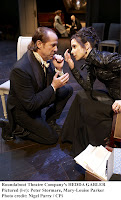
By Nina Hämmerling Smith
Creating wholesome entertainment in Hollywood isn't always easy. Neither is following in the footsteps of one of the most beloved, recognizable father figures in TV history. But that's just what director Michael Landon Jr. has done, crafting a career out of telling stories that parents can feel good about watching with their kids—like the new family-friendly movie “The Velveteen Rabbit,” which opened this month.
Landon had the kind of childhood so many kids dream about. "I grew up on the sets of “Bonanza” and “Little House on the Prairie”, he says. "They were magical times for me." He was especially enchanted with the “Bonanza” visits: "I mean, my dad was playing a cowboy! Riding horses, shooting guns, getting bad guys. I have these amazing memories of seeing all this stuff unfold."
By the time Landon Sr. was appearing on “Little House,” his 9-year-old son started showing an interest in his profession. "My father wore several hats; I got to see him as a writer, director, producer and actor. And it was definitely the directing part that interested me the most."
These early happy experiences profoundly affected Landon, and much of his professional life has been dedicated to making the kind of movies that would fit right in to the “Little House” world.
Take his most recent project, “The Velveteen Rabbit.” In this film, Landon has created a fresh interpretation of an iconic children's book. While Margery Williams' novel, first published in 1922, centers on the plush toy's quest to become real through the love of a boy, Landon's movie instead tells the story from the boy's perspective.
This half-live-action, half-animated adaptation (which is more "inspired by" than "based upon" Williams' book, says Landon) imagines the boy—named Toby—"sent away by his very busy father to spend the holidays with his stern, cold grandmother." He feels unloved in the real world, but Toby discovers a "magic attic" where he can escape into an imaginary world full of love.
"In the Margery Williams classic, [the lesson is that] the more you are loved, the more real you become. What I took from that was the basic theme that love makes us real."
Landon's own storybook childhood came to an abrupt halt when, at age 15, his parents went through a bitter divorce. "It was devastating," he says. "I think it was heightened by the fact that I had, not only in my mind, but in the audience's minds, the perfect father."
Angry and confused, he went into a tailspin of drug and alcohol use. "The teenage years are rebellious for everyone," says Landon, "and some take it further than others. The difference in a broken home is that you don't come home to the same stability anymore. So as you're trying to spread your wings and test things, there's no haven to come back to, because the parents are going through their own crisis. There's no foundation."
For the next three years, as he went off to film school to pursue his dream of becoming a director, Landon continued to struggle with substance abuse. During that time, his mother began having some life-changing conversations with her manicurist, Lois. While working on his mother's nails, Lois "would give her tidbits of wisdom; she would apply them to her situation and realized they worked." When his mother asked the source of this wisdom, Lois told her, "Let me take you to church."
And so his mother began attending church services. She got so much out of them that she encouraged Michael to go as well. "She knew I was in a lot of pain," Landon explains. "But I refused, had no interest whatsoever. Finally, just to appease her, I told her I would go. I can't remember what the pastor was talking about that day, but he spoke to my heart." Even then, Landon resisted regular church attendance—until one day "finally I surrendered and turned my life over to Christ."
Healing the hurt and recovering from drugs and alcohol, however, did not happen overnight. "It was definitely a process—an onion," says Landon. That process included letting go of his anger toward his father; the two found some peace before Michael Landon Sr.'s untimely 1991 death, at the age of 54.
Like his father, Landon has had success producing wholesome entertainment—much of it set in bygone eras—including Jeannette Oak's “Love Comes Softly” TV-movies for the Hallmark Channel.
"One of the reasons I love period [“The Velveteen Rabbit” is set in 1910] is that no one is expecting language and nudity. I feel responsible for what it is that I'm showing."
He finds this brand of entertainment to be disappointingly rare in Hollywood, especially in TV programming. "It's an audience that is underserved. When you tell a good story, even if it doesn't have all the dollars and the talent behind it, people still will come and see it. It's either teaching them or affirming how they see the world, what they want for themselves and their families."
As blessed as he's been, Landon's greatest success is his family: He's happily married, to actress Sharee Gregory, and they have three children (Ashley, 17; Brittany, 14; and Austin, 10). "I've been married for 20 years now, been faithful to my wife, have three amazing children, but I don't take credit for any of that because without God, I would've messed it up by now, there's not a doubt in my mind. At the end of the day, it's definitely not me. I take no credit. There's nothing else but grace to me, nothing else."
This interview appeared in Guideposts
magazine.
















